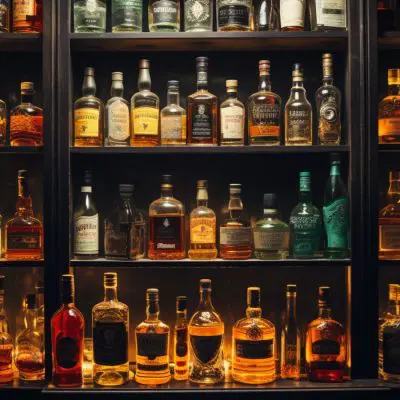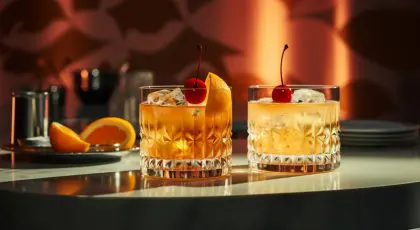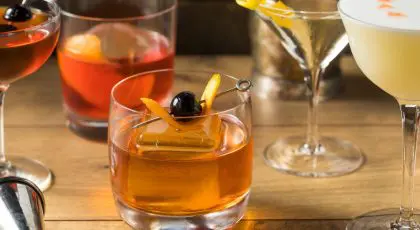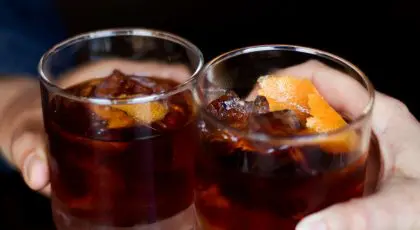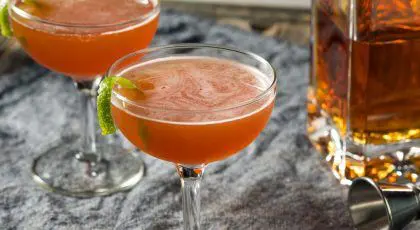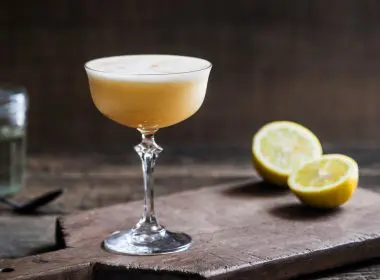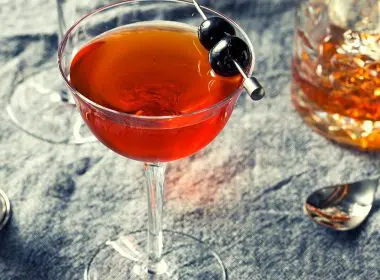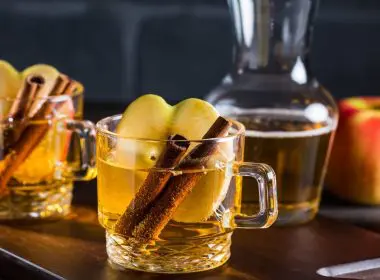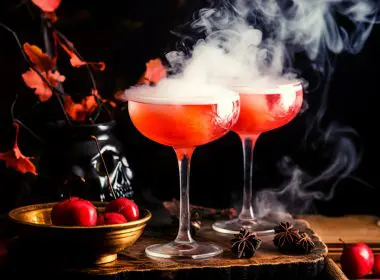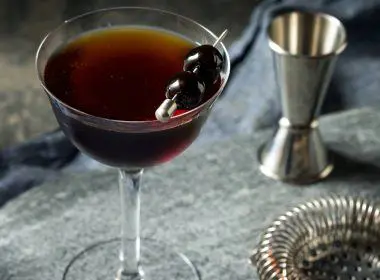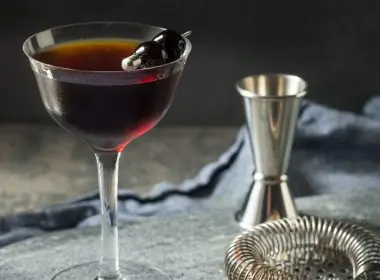Types of Whiskey: An Easy & Concise Guide
Jump to:
Reading up on different types of whiskey, are we? You’re in the right place, friend! In this concise guide, we’ll walk you through an array of whiskey styles, their unique characteristics, and the history behind them. Whether you’re a novice or a seasoned enthusiast, this in-depth introduction and comparison is sure to quench your thirst for knowledge about the wonderful world of whiskey.
What is whiskey?
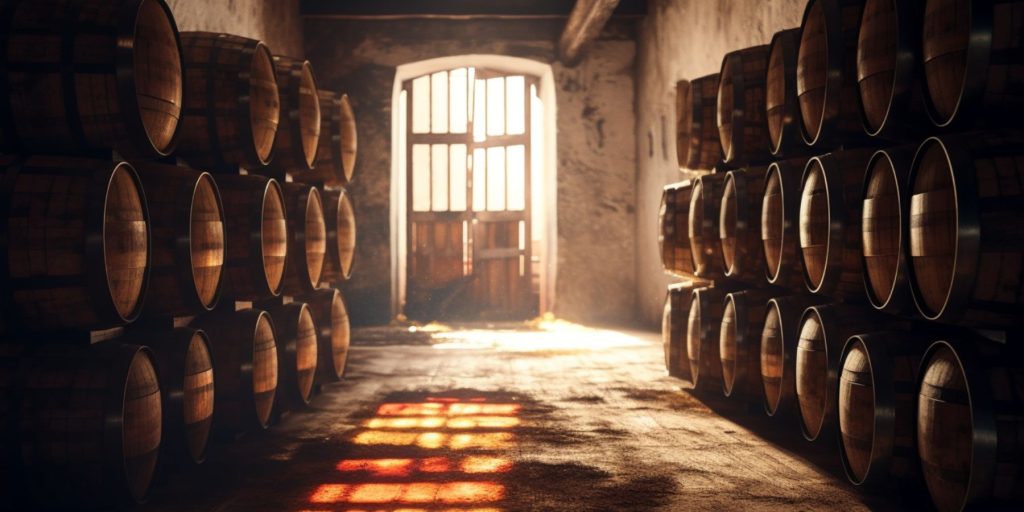
Whiskey is a remarkable spirit crafted from fermented grain mash, using time-honored distillation methods. These elements join forces to create a symphony of flavors and aromas that range from rich and smoky to delicate and fruity. Throughout history, whiskey has woven itself into the fabric of cultures around the world, evoking a sense of tradition and craftsmanship with every sip.
Is it whisky or whiskey?
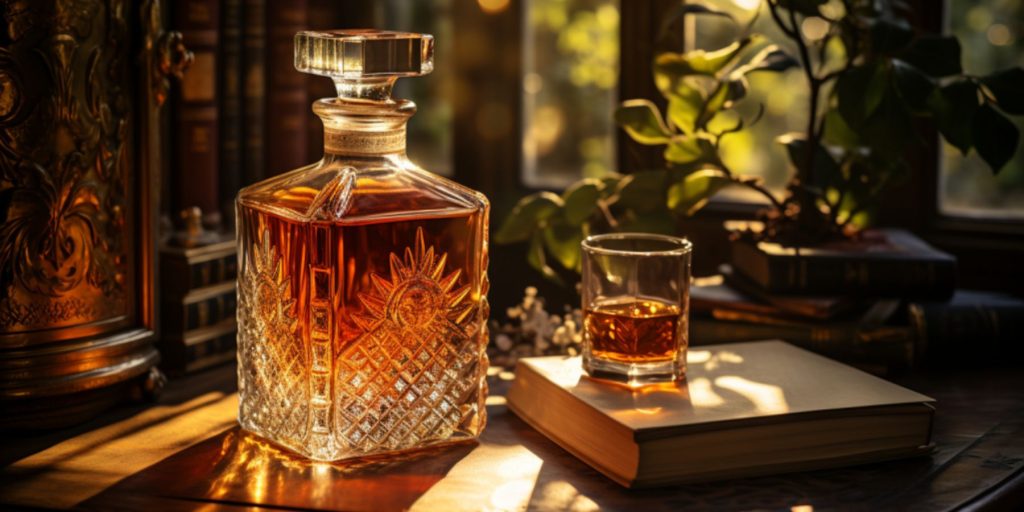
Let’s start by addressing a little linguistic nuance. The spelling of whisky or whiskey may vary depending on where it’s produced. The whisky variation is typically associated with Scottish and Japanese whiskies, while whiskey is commonly used in Ireland and the United States. As such, this subtle distinction reflects the regional differences in production and traditions that make each style unique.
The original term has its roots in the Gaelic languages of Ireland and Scotland. The word is derived from the Irish word “uisce beatha” (pronounced “ish-ka ba-ha”), which means “water of life”. In Scottish Gaelic, the equivalent term is “uisge beatha” (pronounced “oosh-ka ba-ha”). Over time, these terms evolved into the modern English word whiskey.
Now, let’s venture around the world to learn more about the water of life as it is made and enjoyed in different countries.
Scotch whisky
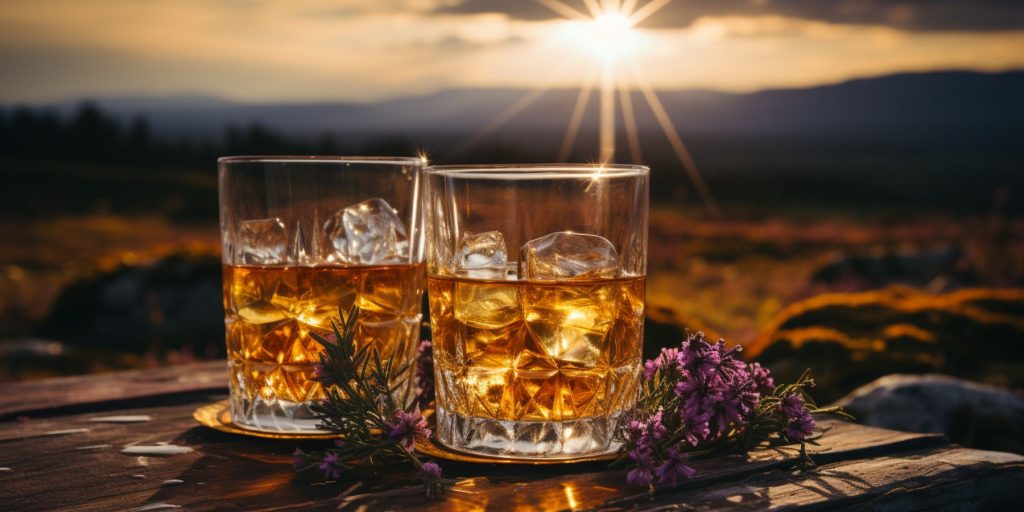
First, we set our sights on the rolling hills of Scotland, where Scotch whisky reigns supreme. Crafted with meticulous attention to detail, this spirit exudes a complex character rooted in centuries of expertise. The process begins with malted barley, which is carefully mashed, fermented, and distilled in pot stills.
The resulting liquid is aged in oak barrels, absorbing flavors from the wood and the surrounding environment. Scotch whisky is a connoisseur’s delight, offering a wide range of flavor profiles, from peaty and smoky to smooth and honeyed.
Food pairing suggestions:
Smoked salmon crostini. Indulge in the smoky richness of Scotch whisky by pairing it with smoked salmon crostini. The smokiness of the salmon resonates with the peaty notes of the whisky, creating a complementary flavor experience.
Cranachan. For a delightful dessert pairing, try cranachan, a Scottish trifle made with whipped cream, raspberries, toasted oats, and honey. Its creamy and fruity notes pair well with the gentle sweetness of Scottish single malts.
Read next: 7 Easy Scotch Cocktails to Make at Your Next Shindig
American whiskeys
Moving across the Atlantic, we encounter the captivating realm of American whiskey. Here, we’ll explore a variety of styles, each with its own distinct personality and heritage.
Bourbon whiskey
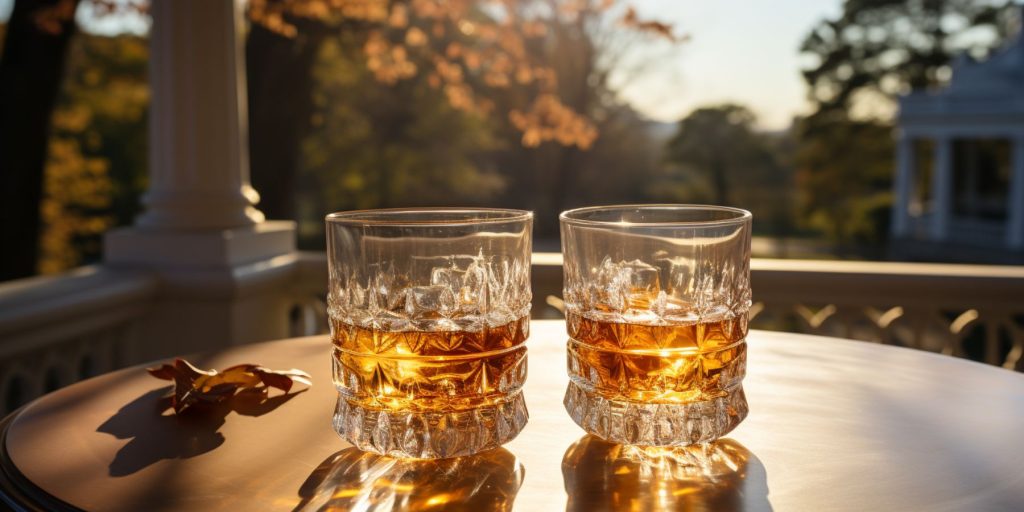
Bourbon, a proud representative of American craftsmanship, is primarily made from corn and aged in charred oak barrels. This process imparts a sweet and rich flavor profile, often accompanied by notes of caramel, vanilla, and a touch of spice. As a versatile spirit, bourbon can be enjoyed neat, on the rocks, or as the star of classic cocktails like the Old Fashioned or Mint Julep.
Food pairing suggestions:
BBQ ribs. The sweet and smoky flavors of bourbon complement the rich flavors of BBQ ribs, resulting in a balanced and indulgent pairing.
Pecan pie. The caramel and vanilla notes in bourbon harmonize with the nuttiness of pecan pie, making for a delightful dessert combination.
Bourbon inspiration: Best Bourbon Winter Cocktails | Bourbon-Based Summer Cocktails
Tennessee whiskey

Sharing many similarities with bourbon, Tennessee whiskey undergoes an extra step known as the Lincoln County Process, where it’s filtered through charcoal before aging. This filtration smooths out the flavors and contributes to its distinctive character.
Food pairing suggestions:
Pulled pork sandwich. The charred and slightly sweet character of Tennessee whiskey pairs well with the smoky flavors of pulled pork.
Cornbread. The smoothness of Tennessee whiskey contrasts beautifully with the crumbly texture and slightly sweet taste of cornbread.
Learn more: Every State’s Most Trending Cocktail (2024)
Rye whiskey
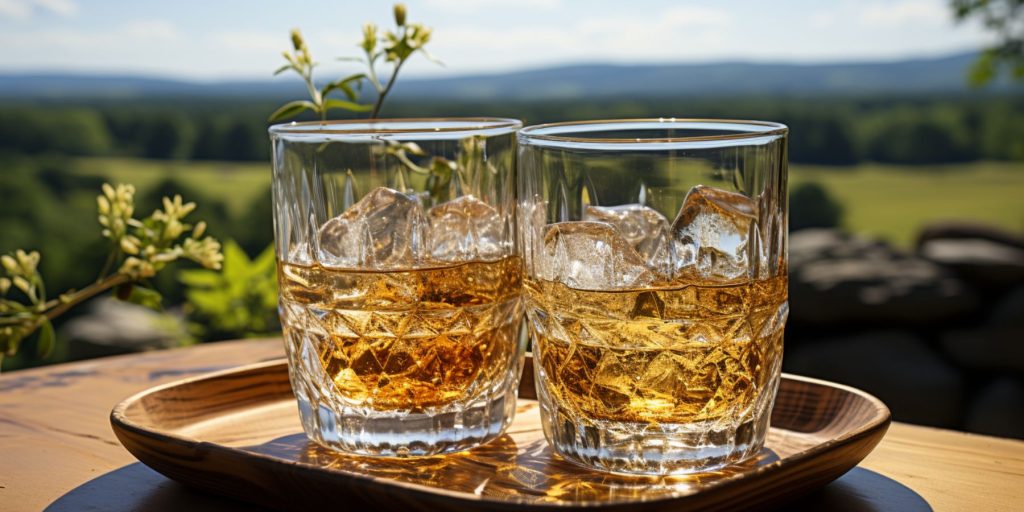
Rye whiskey, with its bold and spicy personality, has been enjoying a renaissance in recent years. Made primarily from rye grains, this spirit delivers a robust flavor profile with hints of pepper, fruit, and a delightful spiciness. Rye whiskey is a staple in classic cocktails like the Manhattan and Sazerac, and a favorite among mixologists and cocktail aficionados alike.
Food pairing suggestions:
Pastrami sandwich. The bold and spicy profile of rye whiskey complements the flavorful and savory elements of a pastrami sandwich.
Dark chocolate. The spiciness of rye whiskey can accentuate the deep and complex flavors of dark chocolate.
Curious? Rye vs Bourbon: The Difference Between Rye Whiskey & Bourbon
Bottled-in-bond
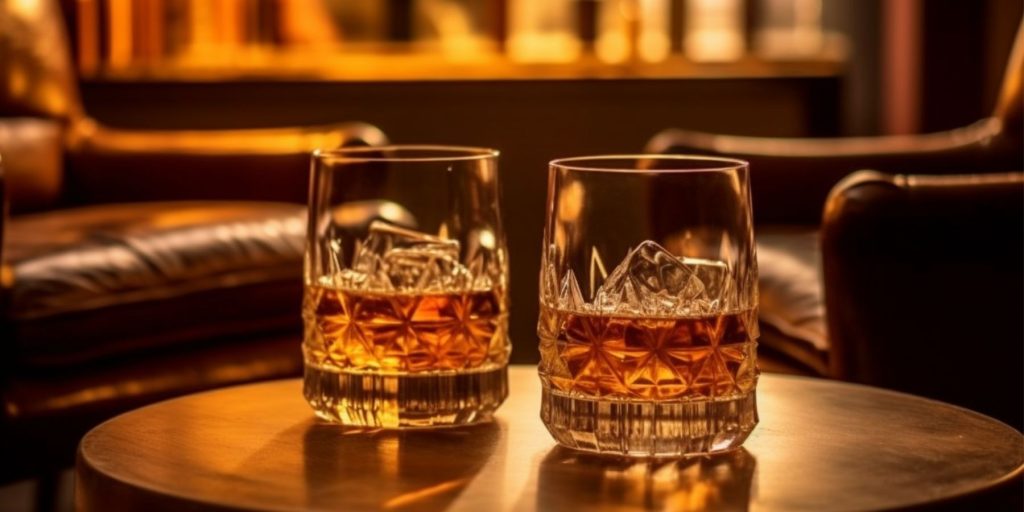
Bottled-in-bond whiskeys (also called bonded whiskeys) are a testament to tradition and quality. Regulated by the Bottled-in-Bond Act of 1897, these whiskeys must be produced at a single distillery in a single distillation season, aged for at least four years, and bottled at 100 proof (50% ABV). This meticulous process ensures a consistent and authentic expression of American craftsmanship.
Food pairing suggestion:
Classic steak dinner. The bold and robust character of BIB whiskey pairs well with a classic steak dinner, emphasizing the savory and hearty flavors of both.
Wheat whiskey
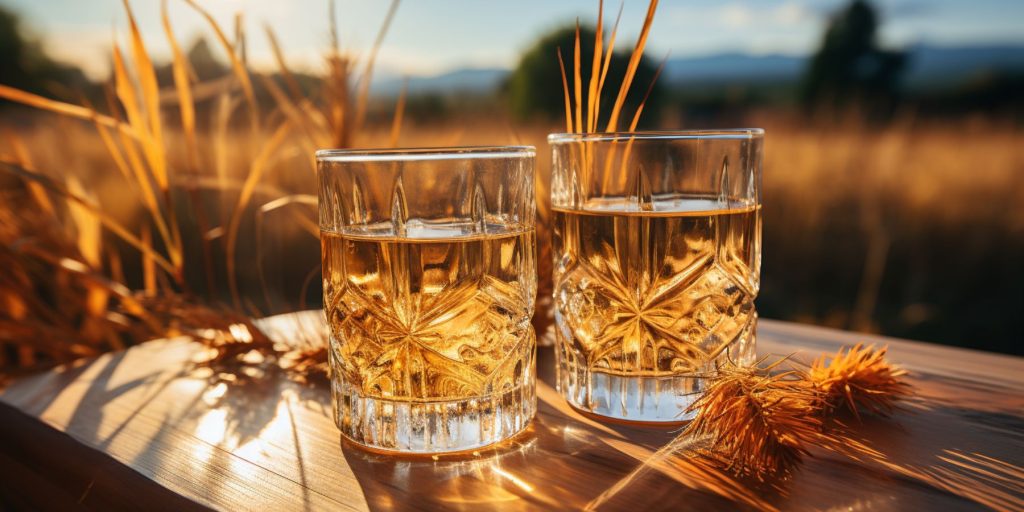
Smooth and approachable, wheat whiskey shines a spotlight on the delicate sweetness of wheat grains. This style offers a softer and milder flavor profile compared to its other American counterparts, making it an excellent choice for those new to whiskey tasting.
Food pairing suggestion:
Seafood risotto. The delicate sweetness of wheat whiskey complements the flavors of seafood risotto, making for a harmonious and sophisticated combination.
White or corn (moonshine)
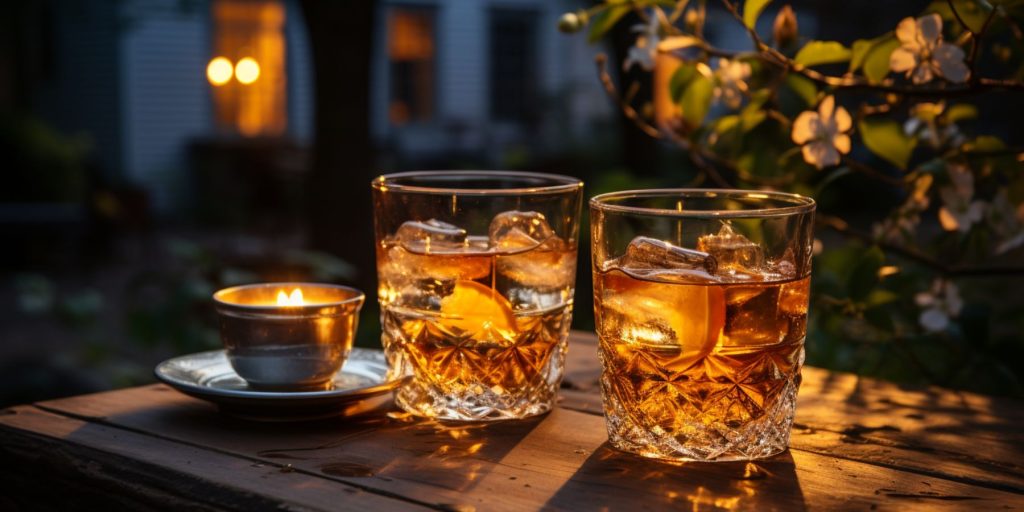
Harkening back to America’s moonshining heritage, white whiskey, or corn whiskey, is unaged and brimming with untamed flavors. This style provides a glimpse into the spirit’s true essence before the transformative influence of oak aging takes hold.
Food pairing suggestion:
Fried chicken. The raw flavors of moonshine contrast with the crunchy and savory notes of fried chicken, offering a playful and enjoyable pairing.
Irish whiskey

The Emerald Isle brings us the smooth and captivating world of Irish whiskey. Crafted with a commitment to tradition and a touch of innovation, Irish whiskey is typically triple-distilled for an exceptionally smooth character. This style encompasses a spectrum of flavors, from light and floral to rich and honeyed, making it an ideal choice for both sipping and mixing.
Food pairing suggestions:
Irish stew. The hearty and comforting flavors of Irish stew complement the smooth and approachable character of Irish whiskey.
Irish coffee cake. Indulge in a harmonious marriage of flavors by pairing Irish whiskey with a slice of Irish coffee cake.
Sláinte! 14 Irish Cocktails to Serve All Year Round
Welsh whiskey
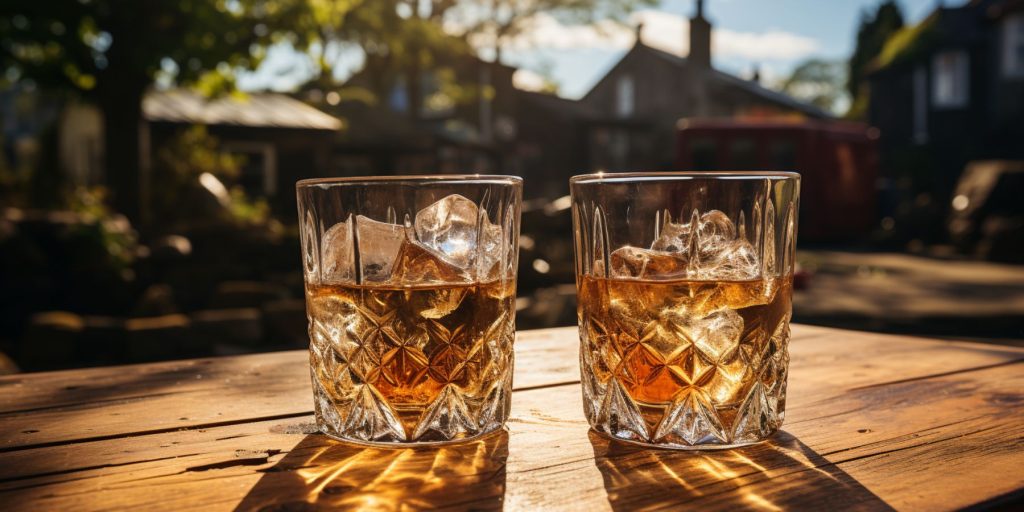
Nestled in the lush landscapes of Wales, Welsh whiskey is a lesser-known gem that’s also been making waves. The distilleries in this region produce a diverse array of whiskies, each offering a unique interpretation of the Welsh terroir. With flavors ranging from light and delicate to rich and smoky, Welsh whiskey is a testament to the diversity and creativity of the global whiskey landscape.
Food pairing suggestions:
Welsh rarebit. Elevate the flavors of Welsh rarebit, a rich and cheesy dish, with the complexity of Welsh whiskey.
Bara brith. The fruitiness of Welsh whiskey complements the sweetness of bara brith, a traditional Welsh fruitcake.
Canadian whisky
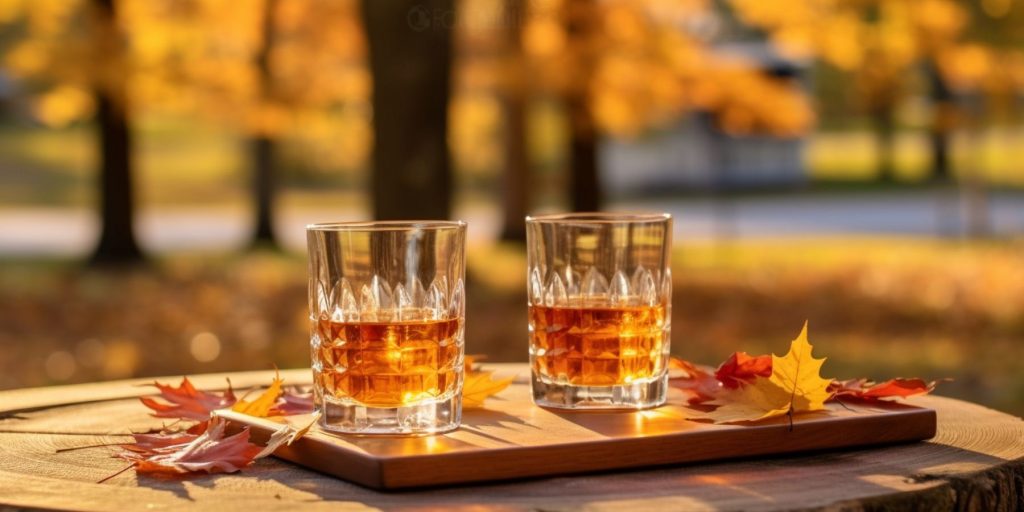
Heading north to Canada, we discover mellow and approachable Canadian whisky. Renowned for their gentle and effortless nature, these whiskies often feature a blend of grains and are aged for a minimum of three years. Canadian whisky’s versatility makes it an excellent option for cocktails, and its smoothness makes it an appealing choice for those new to whisky tasting.
Food pairing suggestions:
Maple-glazed gammon. Embrace Canada’s iconic ingredient, maple syrup, by pairing maple-glazed gammon with Canadian whisky. The whisky’s smoothness complements the delicate sweetness of the glaze.
Poutine. Explore the world of contrasts by pairing Canadian whisky with poutine, a savory dish of French fries topped with cheese curds and gravy. The whisky’s gentle character and light spice will balance the richness of the dish.
Japanese whisky

From the Land of the Rising Sun comes Japanese whisky, a spirit celebrated for its meticulous craftsmanship and attention to detail. Japanese distilleries have carved a unique path, producing whiskies that seamlessly blend tradition with innovation, drawing inspiration from Scottish traditions. Characterized by elegance and precision, Japanese whisky offers a diverse range of flavors, from delicate floral notes to complex smokiness.
Food pairing suggestions:
Miso-glazed black cod. The subtle smokiness and umami of miso-glazed black cod can resonate with the nuanced flavors of Japanese whisky.
Matcha green tea desserts. The complexity of Japanese whisky complements the intricate flavors of matcha desserts, resulting in a unique and satisfying combination.
Kanpai! 10 Japanese Whisky Cocktails to Master
Indian whiskey
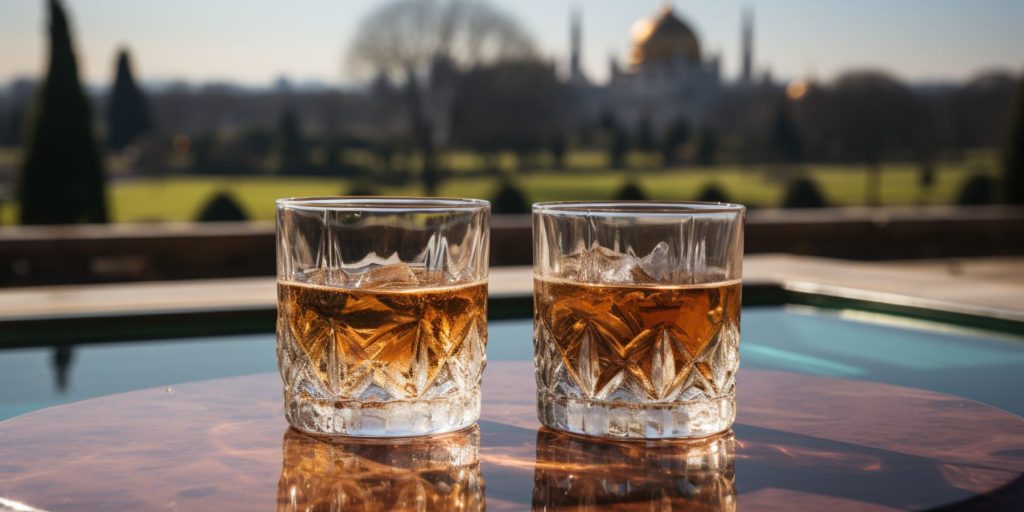
India’s dynamic climate plays a pivotal role in shaping the character of Indian whiskey. The intense temperature fluctuations accelerate the aging process, resulting in whiskies that mature more quickly than their counterparts in cooler climates. Indian whiskey showcases a fusion of flavors, often combining the richness of tropical fruits with subtle spices.
Food pairing suggestions:
Samosas. The whisky’s warming notes can enhance the savory and aromatic elements of samosas, a popular Indian snack.
Chicken tikka. The spice and depth of Indian whiskey can match the bold flavors of chicken tikka, offering a fusion of tastes.
Cheers! 15 Delicious Indian Cocktails to Make at Home
Mexican whiskey
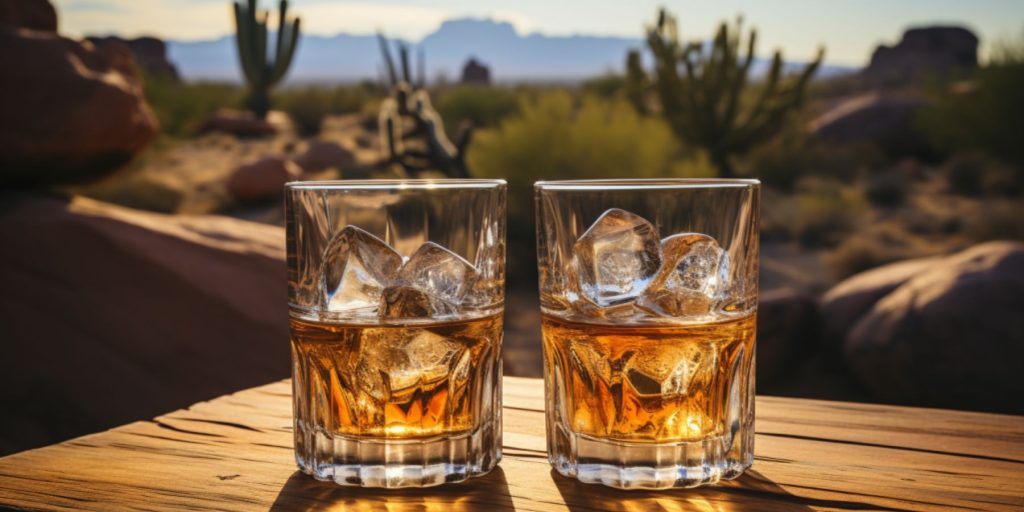
Venturing beyond traditional whiskey regions, we arrive in Mexico, where whiskey production has also taken firm root. Mexican whiskey often boasts a unique fusion of flavors, combining elements of American and Mexican distillation traditions. As this category evolves, it’s gaining recognition for its innovative approaches and the distinctive character it brings to the global whiskey scene.
Food pairing suggestions:
Tacos. The versatility of Mexican whiskey pairs well with a range of taco flavors, from smoky meats to vibrant salsas.
Guacamole and nachos. The whisky’s smoothness contrasts with the creamy guacamole and adds depth to the overall experience.
¡Salud! 13 Best Mexican Cocktails to Make at Home
Single malt and blended whisky
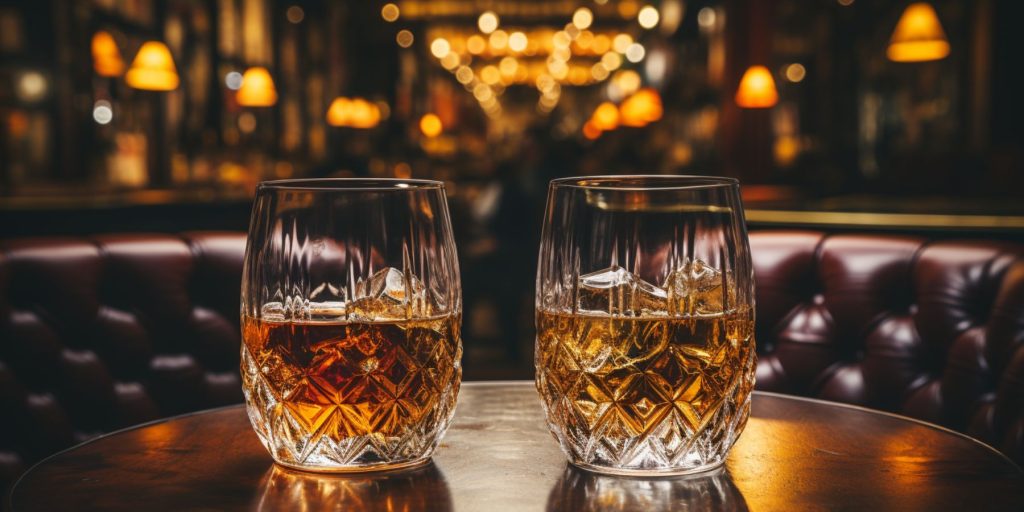
Within the realm of whisky, two distinct styles stand out: single malt and blended whisky. Single malt whisky is crafted using malted barley and distilled at a single distillery. Its flavor profile is influenced by various factors, including the distillation process, aging, and the unique characteristics of the distillery’s location. Blended whisky, on the other hand, combines multiple malt and grain whiskies to create a harmonious and balanced flavor profile.
Flavored whisk(e)y
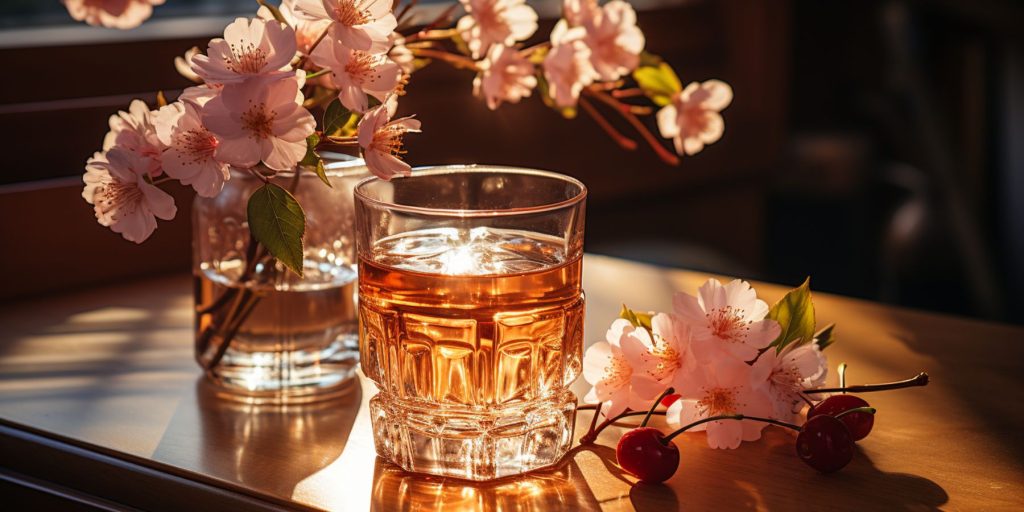
For those seeking a twist on tradition, flavored whiskeys offer an intriguing alternative. By infusing whiskey with a variety of flavors, from fruits and spices to herbs and botanicals, distilleries create a dynamic range of expressions that can be enjoyed on their own or as creative cocktail ingredients.
Fun with flavors! 17 Must-Try Cocktails with Flavored Vodka
How to drink whiskey

Drinking whiskey is not just an act, it’s an experience. Whether you’re new to the world of whisky or a seasoned enthusiast, here are some tips to help you fully appreciate the flavors, aromas, and nuances that this beloved spirit has to offer:
Choose the right glass. Selecting the appropriate glassware can significantly enhance your whisky-drinking experience. Choose a glass that allows you to capture and concentrate the aromas, such as a Glencairn glass or a tulip-shaped glass.
Observe the color. Before you take your first sip, take a moment to observe the whiskey’s color. Swirl the glass gently to coat the sides and appreciate the shades and hues. The color can provide hints about the type of casks used for aging and the whisky’s potential flavor profile.
Nose the aromas. Hold the glass to your nose and take a gentle sniff. Inhale slowly and deeply to capture the whiskey’s aromas. Note the various scents, which can range from fruity and floral to smoky and spicy. Don’t rush this step; allow the aromas to unfold and reveal themselves.
Take small sips. When you’re ready to taste, take a small sip of the whiskey. Allow it to coat your palate and explore the different flavors. Take your time to appreciate the initial taste and any evolving notes that come afterward.
Let it breathe. After your first sip, let the whiskey rest for a few minutes. This gives it a chance to open up, allowing more aromas and flavors to emerge. While it’s resting, you can gently swirl the glass to release additional aromas.
Add a few drops of water (optional). Adding a few drops of water to your whiskey can sometimes open up the flavors and aromas even further. The water can help dilute the alcohol content slightly, making it easier to perceive subtleties in the whiskey’s profile. Experiment with the amount of water to find the balance that suits your taste.
Appreciate the finish. The finish, also known as the aftertaste, is the lingering impression the whiskey leaves on your palate after swallowing. Pay attention to the length of the finish as well as any new flavors that may emerge as the whiskey lingers.
Take your time. Drinking whiskey is a sensory experience that should be savored. Don’t rush through the tasting process. Allow yourself the time to fully explore the whiskey’s characteristics and enjoy the journey.
Experiment and explore. As we’ve already established, the world of whiskey is incredibly diverse, with a wide range of styles, flavors, and regions to discover. Don’t hesitate to try different types of whiskey from various regions and distilleries. Each one has a unique story to tell.
Remember, there’s no single right way to drink whiskey. The key is to engage your senses, be open to new experiences, and appreciate the craftsmanship that goes into each glass. Whether you’re sipping it neat, on the rocks, or as part of a cocktail, the world of whisky is yours to explore and enjoy.
We also give you guilt-free permission to try whiskey cocktails—once you’ve enjoyed the nuances of your whiskey by itself.. Here are a few great ones to consider:
You may also like: Summer Whiskey Cocktails | Winter Whiskey Cocktails
Types of whiskey glasses
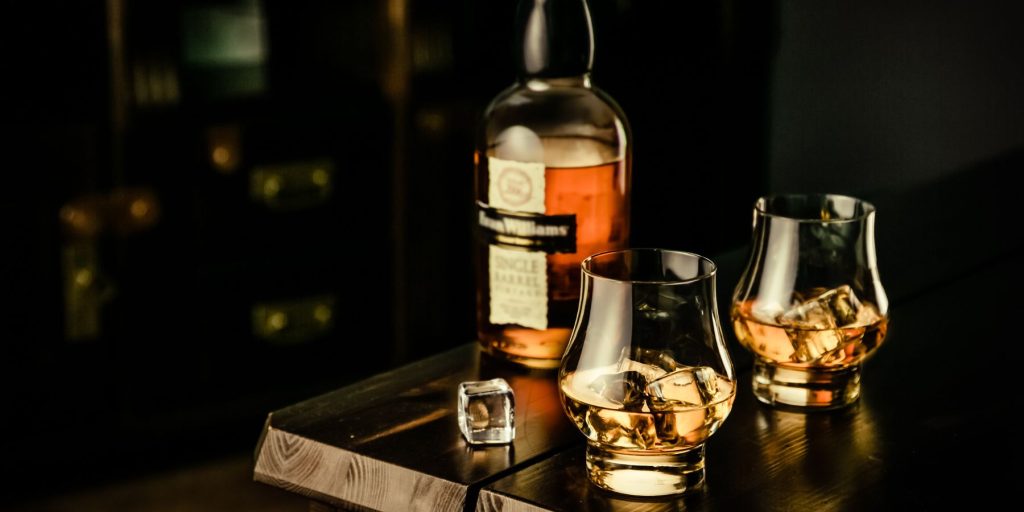
When it comes to enjoying whiskey, the choice of glassware can greatly enhance your tasting experience. Different glass shapes and designs can influence the way you perceive the aroma, flavor, and overall character of the spirit. Here are some of the most common types of whiskey glasses:
Glencairn glass. The Glencairn glass is a favorite among whiskey enthusiasts and professionals. Its tulip-shaped design features a wide bowl that narrows towards the top, concentrating the aromas and allowing you to fully appreciate the spirit’s nuances. The base provides a comfortable grip, and the shape of the glass directs the aromas toward your nose, enhancing the tasting experience.
Tumbler (Old Fashioned glass). The classic tumbler or rocks glass, also often referred to as an Old Fashioned glass, is a short and sturdy vessel with a wide opening. While it may not concentrate aromas as effectively as other glasses, it’s perfect for sipping whiskey on the rocks or enjoying whiskey-based cocktails. Its simplicity and versatility make it a popular choice for casual whisky drinking.
Copita glass. The copita glass is like the Glencairn glass but with a slightly larger bowl. It’s often used for nosing and tasting fine whiskeys, allowing you to swirl the whiskey to release its aromas and then capture them within the glass’s tapered opening.
Snifter glass. Commonly associated with brandy and Cognac, the snifter glass also works well for whiskey tasting. Its wide bowl allows you to swirl the whiskey and release its aromas, while the narrow opening concentrates those aromas for a more intense olfactory experience.
Norlan glass. The Norlan glass is a modern take on whiskey glass design. It combines the characteristics of a tumbler and a traditional nosing glass, featuring a double-walled structure with a unique shape. This design aims to offer the best of both worlds, enhancing aroma concentration while maintaining a comfortable grip.
Canadian whisky glass. Also known as the “Canadian Glencairn”, this glass is similar to the Glencairn but features a wider bowl. It’s designed to accommodate larger ice cubes commonly used in Canadian whiskey drinking culture. The wide opening still allows for appreciating the spirit’s aromas.
Highball glass. While often associated with cocktails, the highball glass can also be used for enjoying whiskey with mixers like soda or ginger ale. Its tall and narrow shape allows for a good amount of ice and mixer, making it suitable for a refreshing whisky-based drink.
Nosing copitas and specialty glasses. In addition to the well-known glass types, there are numerous specialty glasses designed for specific whiskey styles or brands. Some distilleries offer unique nosing glasses that are tailored to their products, enhancing the whiskey’s distinct characteristics.
Ultimately, the choice of whiskey glass depends on your personal preferences and the type of spirit you’re enjoying. Whether you’re savoring the complexities of single malt or mixing up a cocktail, the right glass can make your whisky experience even more enjoyable by highlighting its rich aromas and flavors.
Insider tips from a whiskey fanatic

Tristram Fini, our friend from the Campari Academy UK, has shared a few valuable tips for those who want to gain an even deeper understanding of different types of whiskey:
How environmental factors influence whiskey flavor profiles
Environmental factors play a big role in shaping the flavor profiles of whiskey in different regions. Take Scotland and Kentucky, for example—they each have their own unique influences.
In Scotland, especially in the Highland and Speyside regions, the cooler climate and higher humidity levels create the perfect conditions for aging whisky. The style of warehouses used here allows for longer maturation periods, letting those rich flavors develop over decades. The lower temperatures and increased humidity help the liquor absorb water, fine-tuning the aging process. Plus, the water sources, like the River Spey, provide clean, pure water essential for distillation, which is crucial for high-quality liquors.
Kentucky, the heartland of bourbon production, has a different story. The Kentucky River flows through limestone-rich bedrock, naturally filtering the water to remove iron while adding sweetness ideal for fermentation. Kentucky’s varied climate—with hot summers and cold winters—affects the aging process; unlike Speyside, where barrels proof down due to consistent temperatures, Kentucky’s fluctuating climate causes barrels to proof up, leading to a distinct flavor profile that shows a faster influence of the oak.
How to appreciate whiskey nuances
- Choose your glassware with care. To fully appreciate the nuances of whiskey, consider using a Glencairn glass, specifically designed for Scotch whisky tasting. Another excellent option comes from Denver & Liely, a Melbourne-based producer that creates glassware tailored to enhance the characteristics of various liquors, including single malt, bourbon, Japanese whisky, and agave liquors like tequila and mezcal. A standard double old-fashioned or rocks glass also works well.
- Add a bit of water. To better understand the whiskey’s flavors, try adding a few drops of water. This can help reduce the overpowering effects of ethanol and make it easier to interpret the tasting notes, though it may slightly alter the texture. A good approach is to taste the whiskey neat first; if you feel it needs dilution to reveal more flavors, go ahead and add water.
- Try the Kentucky Chew. One intriguing technique, known as the “Kentucky Chew,” was shared with me by Eddie Russell at Wild Turkey. It involves swishing the whiskey around your mouth on the first sip to prime your palate without breaking apart the flavors. This introduces the ethanol, textures, and base flavors. On the second sip, enjoy the whiskey again, swishing it around while exhaling. This method enhances your experience by enabling you to detect subtle aromas that may have escaped your notice during the initial tasting.
Want to learn even more? Get your go-to guides and cocktail-making tips delivered right to your inbox. Sign up for our easy-to-read newsletter today.
